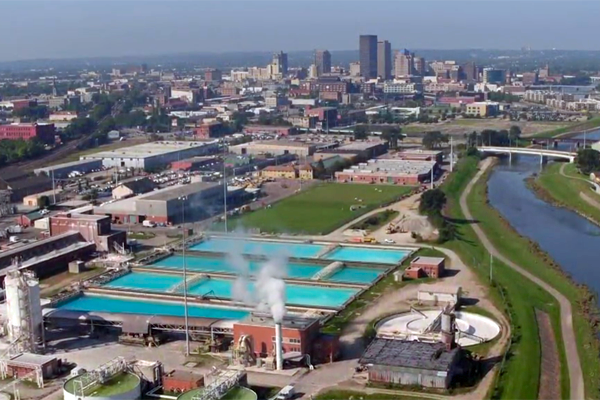
Excerpt from the Dayton Daily News
Test results for toxic, human-made contaminants in Dayton’s drinking water remain well below current federal advisory guidelines but repeatedly tested at or above limits established or proposed by other U.S. states, the Dayton Daily News found in an examination of city data.
City officials test water from Dayton’s two treatment plants each month for per- and polyfluoroalkyl substances, or PFAS. Studies have linked at least two types of PFAS — known by the acronyms PFOA and PFOS — to several health problems, including low birth-weights and various cancers.
The substance was used in firefighting foams at Wright-Patterson Air Force Base and the Dayton Fire Training Center on McFadden Avenue. Both are near the city’s Mad River well field.
The Dayton Daily News Path Forward project digs into solutions for the most pressing issues facing the community, including protecting the region’s drinking water that serves more than 400,000 people in Montgomery County. This story examines new data from the city about PFAS contamination levels.
The newspaper met with city officials to better understand the test results. The Dayton Daily News also asked an expert at Wright State University’s Department of Earth and Environmental Sciences to review the data.
Montgomery County officials called on the city earlier this month to release more information about water quality and their plans to address the contamination. City leaders have repeatedly said the water is safe to drink, despite the newly released higher test results.
“The EPA themselves — they are a pretty strict regulatory entity — are saying and reinforcing that our water is excellent water quality,” said Michele Simmons, environmental manager for the city of Dayton.
Higher results
The U.S. Environmental Protection Agency and the state of Ohio currently do not regulate PFAS. But the federal agency advises PFAS levels should not exceed 70 parts per trillion, and city officials say they follow that guidance.
The city’s Miami Water Treatment Plant is clearly below that level, said Abinash Agrawal, the Wright State professor who reviewed the test results.
“For the Ottawa plant … it’s definitely below 70 parts per trillion, but tests slightly elevated than the Miami plant,” Agrawal said. “Some of the water leaving the Ottawa treatment plant has levels above what other states are following.”

